In Microsoft Dynamics 365 Business Central, default dimensions are what we use to categorize entries so you can track and analyze them on documents throughout the system. Dimensions can, for example, indicate the project or department an entry came from on a sales order. You can set up default dimensions for anything.
You may, though, find that different account types (such as a customer account or an item account) can have different default dimensions set up. When this happens, an entry can have more than one default dimension proposed for a dimension. To avoid this, you can apply priority rules to the different sources.
In this blog, we are going to look at the setup and functionality related to default dimension priorities.
Default Dimension Priorities
In this example there are default dimension values defined at the vendor, G/L account, and item level.
We will enter a purchase invoice to see a simple example of how default dimension priorities work.
Vendor 10000 has Department 200 as default.
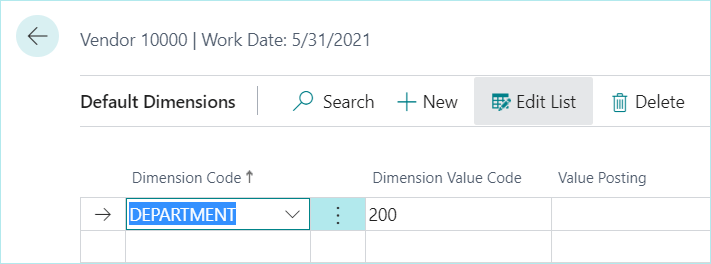
Account 60200 has Department 400 as default.
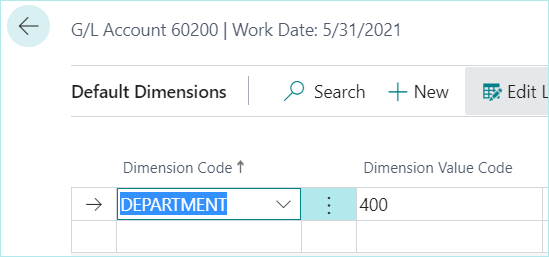
Item 1896-S has Department 300 as default.
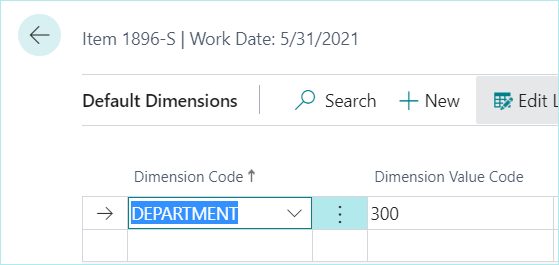
I entered an example purchase invoice below using the GL account and item that have default dimensions. Notice that they both defaulted to Department 200.
Without any dimension priorities, when I enter a purchase invoice, everything will default to Department 200 (based on the vendor default dimension).
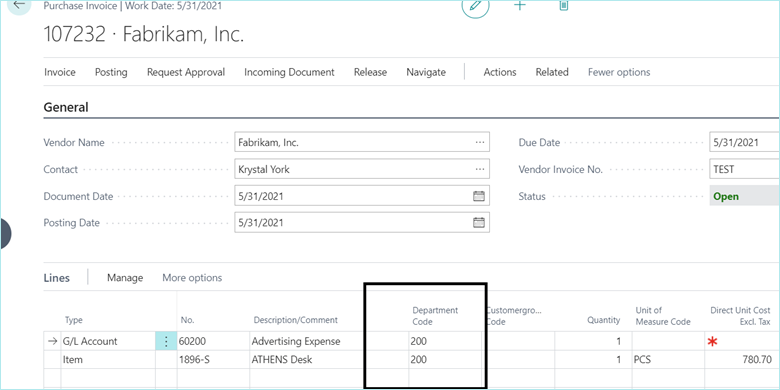
Now I will change the setup by searching for “Default Dimension Priorities.”
In this window I have the option to define priorities for different types of transactions. I will choose PURCHASES as the source code since I want to test this out with purchase invoices.
Now I can define a priority list. In this example, I want Business Central to first check the item; if there is a default dimension, I want to pull it from there.
If not, then look at the vendor and if there still isn’t a default defined, pull it from the G/L account number.
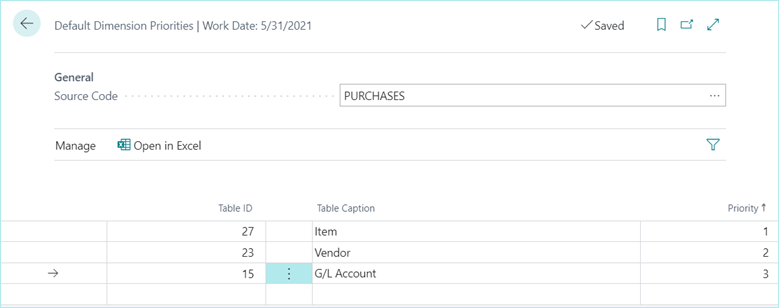
I entered a new purchase invoice after updating the priorities.
Since the Fabrikam vendor has a default dimension, it pulled Department 200 even though the G/L account also has a default.
However, the item pulled Department 300 instead of looking at the vendor since item is higher on the priority list.
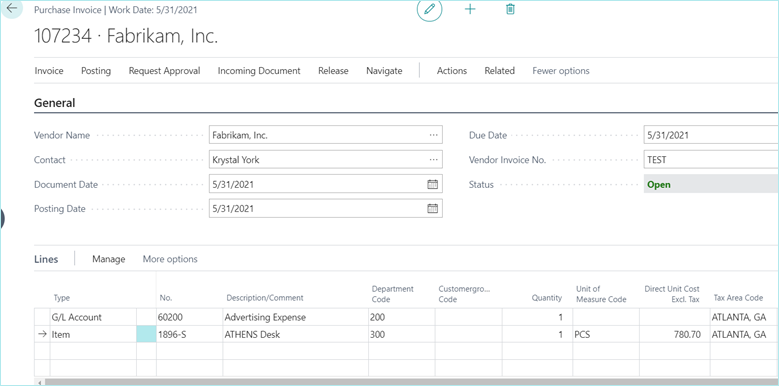
Now I will enter a purchase invoice for a vendor that does not have a default dimension defined.
In this example, it pulled Department 400 from the G/L account default dimension since it didn’t find anything on the vendor.
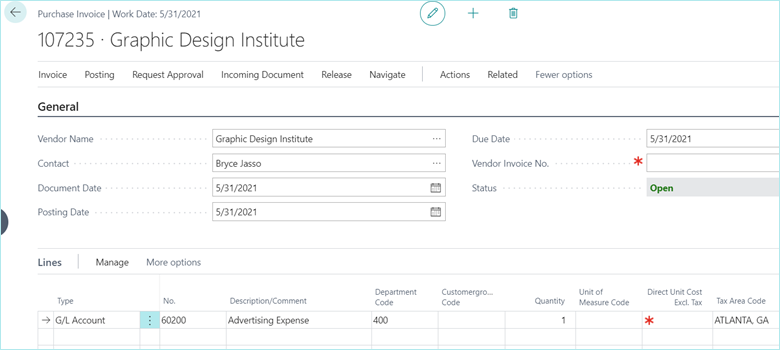
You can adjust the priorities however you’d like throughout Business Central.
Have you visited our YouTube channel yet? It’s full of fantastic how-to content for Business Central – be sure to subscribe while you’re there.
